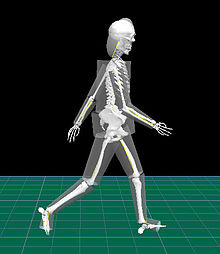The entire experiment and research revolves around the research hypothesis (H1) and the null hypothesis (H0), so making a mistake here could ruin the whole design.
Needless to say, it can all be a little intimidating, and many students find this to be the most difficult stage of the scientific method.
In fact, it is not as difficult as it looks, and if you have followed the steps of the scientific process and found an area of research and potential research problem, then you may already have a few ideas.
It is just about making sure that you are asking the right questions and wording your hypothesis statements correctly.
The Three-Step Process
Often, it is still quite difficult to isolate a testable hypothesis after all of the research and study. The best way is to adopt a three-step hypothesis; this will help you to narrow things down, and is the most foolproof guide to how to write a hypothesis.
Step one is to think of a general hypothesis, including everything that you have observed and reviewed during the information gathering stage of any research design. This stage is often called developing the research problem.
An Example of How to Write a Hypothesis
A worker on a fish-farm notices that his trout seem to have more fish lice in the summer, when the water levels are low, and wants to find out why. His research leads him to believe that the amount of oxygen is the reason - fish that are oxygen stressed tend to be more susceptible to disease and parasites.
He proposes a general hypothesis.
“Water levels affect the amount of lice suffered by rainbow trout.”
This is a good general hypothesis, but it gives no guide to how to design the research or experiment. The hypothesis must be refined to give a little direction.
“Rainbow trout suffer more lice when water levels are low.”
Now there is some directionality, but the hypothesis is not really testable, so the final stage is to design an experiment around which research can be designed, a testable hypothesis.
“Rainbow trout suffer more lice in low water conditions because there is less oxygen in the water.”
This is a testable hypothesis - he has established variables, and by measuring the amount of oxygen in the water, eliminating other controlled variables, such as temperature, he can see if there is a correlation against the number of lice on the fish.
This is an example of how a gradual focusing of research helps to define how to write a hypothesis.
The Next Stage - What to Do With the Hypothesis
Once you have your hypothesis, the next stage is to design the experiment, allowing a statistical analysis of data, and allowing you to test your hypothesis.
The statistical analysis will allow you to reject either the null or the alternative hypothesis. If the alternative is rejected, then you need to go back and refine the initial hypothesis or design a completely new research program.
This is part of the scientific process, striving for greater accuracy and developing ever more refined hypotheses.
Read more: How to Write a Hypothesis - The Research Paper Question







